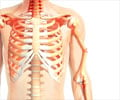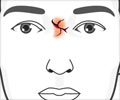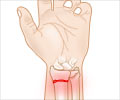Trial finds school playgrounds fitted with granite sand surfacing significantly reduce the risk of children fracturing arms in comparison with wood fibre surfaces
A randomized trial published this week in the open-access journal PLoS Medicine says that school playgrounds fitted with granite sand surfacing significantly reduce the risk of children fracturing arms in comparison with wood fibre surfaces.
Even in well maintained playgrounds there is always a risk of injury – in the United States alone, 200,000 children are treated for playground injuries a year. Andrew Howard (of the Hospital for Sick Children, Toronto, Canada) and colleagues examined the rate of arm fracture as a result of falls on to two types of playground surface – granite sand and engineered wood fibre. Despite standards for the type and depth of surfaces used in school playgrounds, there is little information about the ability of different surfaces to prevent injuries. The researchers took advantage of planned playground replacement by the Toronto School District Board in a number of schools to perform a randomised controlled trial of the two surfaces in preventing injuries.Over two and a half years, the researchers found that of the 19 schools that complied with the surface they were randomly assigned to, falls from height onto wood fibre surface resulted in more arm fractures than falls from height onto granite sand. The risk of an arm fracture was 4.9 times higher on a wood fibre surface compared to a granite sand playground. The rate of arm fracture and other injuries that were not as a result of falling from height did not vary between the surfaces.
These findings are limited by the small number of fractures that occurred in either group during the trial. Nonetheless, the researchers conclude that updating playground safety standards to recommend granite sand "will reduce the most common and severe injuries seen on modern playgrounds, without limiting children's access to healthy outdoor play."
Source-Eurekalert
RAS














